Time Under Tension Workouts: Top 5 Benefits & How to Maximize Results

Table of contents
- What Is Time Under Tension?
- Does Time Under Tension Build Muscle and Strength?
- Benefits of Time Under Tension
- Time Under Tension vs. Heavy Weights
- How to Use Time Under Tension in Your Workouts
- How Long Should Your Muscles Be Held Under Tension?
- Using Resistance Bands with Time Under Tension
- Time Under Tension Examples
- Frequently Asked Questions
There are many ways to complete a workout, and no one method is “right” for everyone. But one thing is true: any strength- or resistance-based activity should involve some degree of time under tension.
Time under tension workouts can help you get better fitness results while keeping your program engaging and exciting. Let’s look at what time under tension means and how it can help upgrade your workouts.
What Is Time Under Tension?
Time under tension (or TUT) is how much time a muscle is contracting during exercise.
Resistance training like weightlifting or bodyweight exercises incorporate TUT to build muscle, endurance, and strength. During a time under tension workout, you extend the time your muscles are contracted.
For example, say you’re doing a bicep curl. If you curl up for three seconds and back down for one second, then rest, your TUT is four seconds.
You can increase time under tension by slowing your movements during weight or resistance training without resting in between reps or by holding static poses, such as planks.
Why Does Time Under Tension Matter?
The idea behind TUT is that you’ll make your muscles work harder, improving strength, endurance, and muscle tone. While the research is mixed on how much TUT matters (more on that next), it will certainly diversify your workouts and potentially upgrade your results.
Does Time Under Tension Build Muscle and Strength?
Yes, workouts with a longer time under tension can help you build muscle and get stronger. They also add variety to your workouts and force you to slow down each exercise, which can help you improve form and control.
Is more time under tension better than doing shorter reps or lifting heavier weight? It depends. Some research shows only minor improvements in muscle strength and size with time under tension.
However, other evidence has indicated slower tempo movements with greater TUT, especially during the eccentric phase (when the muscle is lengthening, such as when you lower the weight during a bicep curl), might help increase muscle hypertrophy.
(Hypertrophy is a fancy word for increasing muscle size.)
Other research found that doing eccentric and concentric movements for six seconds each led to metabolic benefits immediately after the exercise, instead of the benefits you’d typically experience a full day after high-intensity interval training (HIIT).
Other evidence shows TUT plays a role in muscle hypertrophy but varies in its benefits depending on the training program. The total TUT a muscle group experiences during a workout might influence muscle growth, especially in Type 1 muscle fibers.
In addition, a 2016 study found that muscle growth might increase more by making the eccentric phase (lengthening) twice as long as the concentric phase (shortening) in an exercise.
5 Benefits of More Time Under Tension
Now, let’s explore specific benefits you might experience from increasing your workout time under tension.
1. Muscle Building Plus Endurance Training
Lifting moderate weight with higher TUT helps create long, lean muscle by recruiting slow-twitch muscle fibers and working on endurance.
By slowing down, you also prevent your body from using momentum to move the weight. You challenge your muscles by removing any “cheating” or shortcuts.
And as mentioned above, time under tension can help increase muscle growth and provide metabolic benefits post-workout.
2. Holding Contractions for Longer
Workouts using resistance bands maximize TUT. Unlike weight training, where it’s easier to lower your weights between reps, with resistance band workouts, your muscles must stay engaged during each entire movement.
3. Perfecting Your Form
If you struggle to maintain good form or have muscular imbalances, TUT can help you.
By increasing time under tension, you must perform reps at lower weights and slower speeds. You can focus on the positions of your body as you complete the exercise, making sure your form is setting you up for optimal muscle contraction. Once you improve your form, you can move on to heavier weights or resistance.
In addition, TUT training can be excellent for those who struggle to activate muscles properly. Slower movements increase your mind-muscle connection over time so that you know what to contract and which form is correct.
4. Avoiding Common Injuries
Higher TUT can also help prevent injuries caused by poor form, improper muscle contraction, or lifting too much too soon.
5. Keeping Workouts Exciting
You might think a squat is just a squat, but TUT allows you to mix things up. You can enjoy different types of workouts by incorporating additional time under tension.
For example, you might perform a set of squats that are slower on the eccentric (when lowering down), engaging and challenging the muscles at a different tempo than you’re used to.
Time Under Tension vs. Heavy Weights: What You Should Know
You might be wondering, “Which is better: lower weights with more time under tension or shorter sets with heavier weights?”
But the answer is not that simple.
Truthfully, both types of exercise are beneficial in their own ways, and they can complement each other in an exercise program.
Benefits of Heavy Lifting vs. Longer TUT
Lifting heavy with explosive movements employs more of your slow-twitch muscle fibers — and more muscle fibers at once. It can help you grow lean muscle, but it’s also important to maintain proper form to prevent injuries.
Also, let’s not discount that heavy lifting does include some time under tension. That’s because anytime you are contracting your muscles, you’re holding them under stress. But how long you’re keeping the muscle under tension depends on the type of heavy lifting.
High-weight reps or explosive movements like jump squats limit time under tension because they are faster yet challenging exercises. However, “normal” weight lifting where you’re performing 8-12 reps per set could incorporate more time under tension during each rep. It all depends on the program you’re following.
So, you can do both types of exercise on different days, do one a few weeks at a time before switching, or choose the style that works best for you. Or, you can follow a professional-led at-home program that makes these decisions for you — you just follow the workouts!
How to Use Time Under Tension in Your Workouts
While time under tension is an important factor, it’s just one piece of maintaining an effective workout program.
If you want to get the most out of TUT, here are some tips:
Focus More of Your TUT on the Eccentric Movement
Evidence shows that eccentric training increases muscle strength more than concentric or isometric movements.
If you remember from above, the eccentric phase is when your muscle is elongating — like bringing the weight back down during a bicep curl.
Focus on Isometric, Too
Isometric phases happen when you pause in the middle of a movement. The muscle is contracting but not moving one way or the other.
Combining eccentric TUT with tension during the isometric phase can help you build lean muscle and mix up your workouts.
For example, you might pause between the concentric and eccentric phases of a squat. That adds an extra challenge and is beneficial for building and maintaining strength.
Limit Your Rest
Another way to get more out of your TUT workouts is by limiting how long you pause between reps.
Instead of locking out your knees and waiting several seconds between squats, move smoothly between reps. This will increase the time under tension on your muscles, improving the workout intensity.
Complete Full Reps with Good Form
TUT workouts typically involve more reps than heavy-weight exercises. So, you have more time to become fatigued and get lazy on your form.
Don’t let that happen!
Focus on maintaining good form during each rep, and make sure you perform complete reps each time. If you struggle to do either, you likely need to use less weight/resistance or do fewer reps.
Do Drop Sets
Drop sets (a type of superset) help increase your TUT while allowing you to eke out a little more from each rep.
Drop sets involve finishing a regular rep, then dropping the weight by ten to thirty percent and repeating the rep at that weight. There is no rest in between.
You can also use a drop set if you struggle to finish your last few reps. Drop the weight so that you can finish the set.
Include Tempo Training
Keeping a steady tempo can improve your time under tension training.
Tempo training is about controlling how long your muscles stay in each phase of contraction:
- Eccentric
- Isometric
- Concentric
You can write tempo training with a number representing the seconds for each phase, such as 2:1:2.
Let’s say you’re doing a set of pushups at the tempo above. Starting from a plank position, you would lower down for two seconds, pause in the pushup for one second, then push back up to the plank position for two seconds.
Keep Things Interesting
Adding TUT training to a weekly workout plan can add variety and help you break out of a plateau.
Longer-tempo TUT works best for lighter weight movements, and shorter-tempo TUT is best for heavier weights. Switch things up to renew your excitement in a routine.
How Long Should Your Muscles Be Held Under Tension?
According to the International Sports Science Association (ISSA), here are the ideal time ranges to hold a muscle under tension per set for different fitness outcomes:
- For building strength: 20 seconds or less
- For hypertrophy (building muscle): 20-70 seconds
- For endurance: 70 seconds or longer
Personal trainer Jeremey DuVall estimates a set of 10 reps to take about 15-25 seconds for most lifters. The exact time will depend on your average lifting speed.
So, if you want to build muscle, you might perform 3-5 sets of 6-12 reps per exercise, ensuring that you are holding your muscles under tension anywhere from 20 to 70 seconds per set.
As the ISSA mentions, the workout intensity should be 67-85% of your one-rep max (the heaviest weight at which you can perform just one rep).
Using Resistance Bands and Time Under Tension to Get Fit
Resistance bands offer a fantastic way to maximize time under tension during a workout. When you strength train using a full-service band system like Gorilla Bow, you keep your muscles under some form of pressure through the entire movement.
Rather than dropping the weights or resting too much in between reps, you power through while maintaining constant tension on your muscles. And TUT is one of the key components you need (along with others like proper recovery and progressive overload) to build muscle.
You can use the techniques above with resistance bands to maximize your TUT, promoting lean muscle growth. Best of all, you can fit in an effective workout anywhere — even when there are no weights in sight.
Examples of Time Under Tension Workouts
Here are some examples of exercises that help you maximize your TUT using multiple muscle groups at once:
- Planks
- Wall sits
- Lunges
- Squats
- Push-ups
- Bench presses
Slowing the eccentric, isometric, or concentric phases during any of these exercises will increase your total TUT. You can play around with different ratios for each phase, although the evidence seems to indicate that longer eccentric phases are most beneficial.
Overall, time under tension training is just one way to work out, get fit, and stay lean. You can incorporate greater TUT to build muscle and strength while diversifying your workouts.
Other Frequently Asked Questions
Is Time Under Tension a Myth?
Time under tension is not a myth; it’s an actual term referring to how long your muscles are contracting under strain. And if you want to build muscle, you have to stress your muscles.
When people mention TUT being a myth, they’re probably referring to the idea that great TUT is the key to better muscle growth. While limited evidence shows additional TUT can be helpful, there are many ways to work out and spur muscle growth.
Should You Use a Certain Tempo for TUT?
A 3:1:1 tempo is the most common in strength training, according to the American Council on Exercise (ACE). That means counting three seconds during the eccentric (lengthening) movement, one second during the isometric phase, and one second during the concentric (shortening) phase.
However, your tempo will depend on your workout goals and preferences. You can then determine which forms of TUT complement your routine and help deliver your desired results.
Does TUT Training Work?
Like any carefully planned routine, workouts that focus on TUT can lead to hypertrophy, which means you build muscle. It can also help you stay excited about your workouts by adding variety and boosting the difficulty.
______________________
Sources:
- https://www.sciencedirect.com/science/article/pii/S2468867319300513?via%3Dihub
- https://physoc.onlinelibrary.wiley.com/doi/full/10.1113/jphysiol.2011.221200
- https://www.ncbi.nlm.nih.gov/pmc/articles/PMC3285070/
- https://us.humankinetics.com/blogs/excerpt/is-there-an-ideal-time-under-tension-to-maximize-muscle-growth
- https://www.scielo.br/j/motriz/a/pHhmCpsFtr646J8thjLfsRm/?lang=en
- https://bjsm.bmj.com/content/43/8/556.short
- https://www.issaonline.com/blog/post/time-under-tension-training-not-just-for-muscle-growth
- https://www.mensjournal.com/health-fitness/gain-big-with-time-under-tension-training/
- https://www.acefitness.org/resources/pros/expert-articles/4931/weight-lifting-tempo-amp-sets-how-to-select-the-right-sets-for-your-clients/


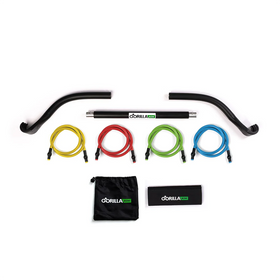
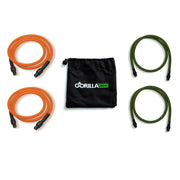
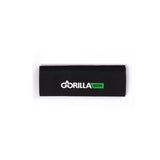
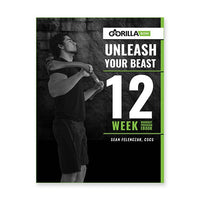
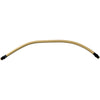



Leave a comment